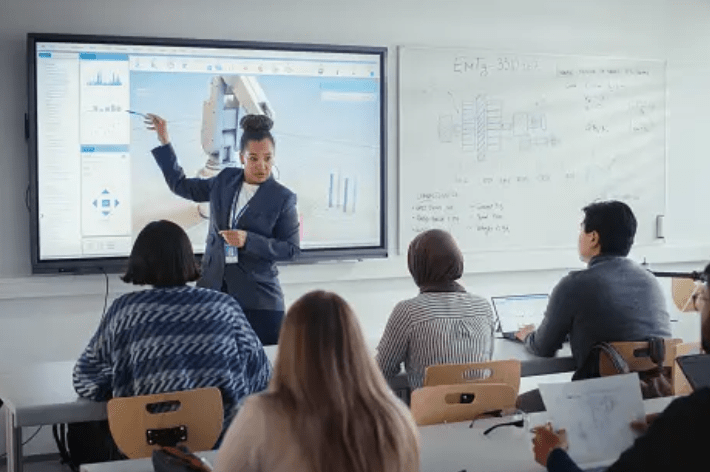
Educational institutions stand at the forefront of technological transformation, facing unparalleled opportunities and multifaceted challenges. Integrating technology into the classroom reshapes the essence of teaching and learning. Yet, for every advancement, there emerges a set of issues — from the pressing need for digital equity to the looming shadows of cybersecurity threats. For educators and administrators, these are not merely abstract concerns; they have tangible impacts on academic outcomes.
Recognizing, understanding, and addressing these challenges is crucial. Throughout this exploration, this article aims to highlight some of the most significant IT obstacles that educational environments confront in the present era.
Infrastructure and Connectivity
In an era where technology forms the educational backbone, having a robust infrastructure is paramount. It isn’t solely about having an internet connection but also about the speed, stability, and ability to cater to the simultaneous demands of multiple devices and applications. A single lapse in this foundation can stall the learning process. Outdated systems and limited bandwidth can plague many institutions, especially in remote regions where achieving high-speed internet remains a hurdle. Technology consultancies, like Timewade or a similar one, provide solutions that help institutions enhance their IT backbone. To bolster the learning experience, they must consider infrastructure upgrades, redundancy systems, and innovative solutions such as satellite internet or mesh networks.
Digital Equity And Access
The cornerstone of modern education is the belief that all students, irrespective of their background, should have equal access to learning resources. However, there are apparent disparities when it comes to digital accessibility. For students in underserved or rural communities, challenges aren’t just about connecting to the internet but having the tools and skills needed to participate fully in a digital classroom.
The broader societal implications of this digital divide are evident. It’s up to educational establishments to identify these gaps and actively seek solutions. Partnerships with local communities, focused investments in tech tools, and initiatives promoting digital literacy can pave the way for a more inclusive academic environment.
Cybersecurity Concerns
Digital education brings complex cybersecurity challenges. As schools and universities transition to online systems, they amass significant personal and academic data, inadvertently making them targets for cybercriminals. Beyond data theft, motivations range from malicious intent to financial gain. Phishing, ransomware, and unauthorized intrusions constantly remind people of these hazards.
Addressing these concerns goes beyond merely setting up firewalls or antivirus software. It requires a holistic approach, encompassing state-of-the-art security infrastructure and cultivating a cybersecurity-conscious culture among students, staff, and faculty.
Data Privacy and Management
Educational institutions struggle with the delicate task of safeguarding sensitive information. It’s not merely about storing data; it’s about ensuring it is protected, accurately maintained and appropriately utilized. Any mishandling or unauthorized access can lead to significant consequences, including legal penalties and diminishing the trust of students and families.
Critical strategies for robust data management include establishing strict privacy protocols, optimizing access controls, and utilizing secure and efficient data storage technologies. Consistent review and updates of these measures and transparent communication regarding data usage is essential. In this way, institutions can maintain the integrity of their data, supporting a secure and respectful learning environment.
Budgetary Constraints
While the allure of maximizing technological potential is evident, these institutions frequently face budgetary constraints. The costs associated with technology, from infrastructure upgrades and software licenses to hiring IT experts and training personnel, add up rapidly.
Institutions recognize the undeniable value of technological investment and face the challenge of striking a balance. Allocating funds to technology while addressing other essential areas, like facility upkeep or faculty recruitment, demands careful financial planning and prioritization.
Financial limitations can sometimes mean delayed upgrades, reliance on outdated tools, or reduced access to top-tier resources.
Institutions, therefore, need to be strategic in their spending: prioritizing essential updates, seeking grants or partnerships, and exploring cost-effective yet impactful technological solutions. Navigating these budgetary challenges requires foresight, collaboration, and a commitment to ensuring that financial constraints don’t compromise the quality of education.
Potential Solutions To Address Challenges
To tackle the multifaceted challenges presented by IT in education, institutions can consider the following strategies:
- Collaborative efforts – Engage with tech companies, local governments, and community stakeholders to build robust digital infrastructure and ensure more comprehensive access.
- Continuous training – Offer regular training sessions for staff and students, ensuring everyone stays updated on the latest technologies and cybersecurity best practices.
- Flexible budgeting – Allocate resources dynamically, prioritizing pressing needs while setting aside funds for future technological advancements.
- Open-source solutions – Consider using open-source software and platforms that offer cost-effective alternatives to expensive proprietary systems.
- Cloud-based systems – Shift to cloud-based solutions that can be scaled as per requirements, ensuring data security and easy access.
- Feedback mechanisms – Regularly gather feedback from students, faculty, and staff to understand their challenges and needs, allowing for more targeted IT solutions.
- Maintain awareness of developments – Join scholarly tech forums, subscribe to relevant publications, and participate in webinars to stay abreast of the latest trends and best practices.
By proactively exploring and implementing these solutions, academic institutions can be better poised to navigate the IT challenges of the modern age and enhance the overall learning experience.
Final Thoughts
Integrating technology in education brings transformative opportunities, continually refining how knowledge is disseminated and absorbed. As education continues to evolve alongside technology, the focus for institutions should be on adaptability, vigilance, and consistent enhancement. The choices institutions make now set the trajectory for educational methodologies in the coming years. With a collaborative approach and a commitment to innovation, educational entities can lay the groundwork for enriched academic experiences in the future.



